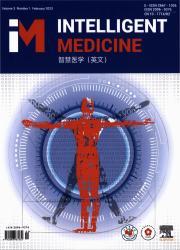Incident-induced attention-based deep learning model for early warning of sepsis onset
IF 6.9
Q1 COMPUTER SCIENCE, INTERDISCIPLINARY APPLICATIONS
引用次数: 0
Abstract
Background
Accurate early warning of sepsis onset is crucial for reducing mortality. However, the inter-individual heterogeneity in clinical manifestations of sepsis leads to significant sparsity of data. The current time series analysis methods attempt to interpolate highly sparse sepsis data, yielding unsatisfactory results. In this study, we aimed to develop an efficient artificial intelligence approach for early warning of sepsis onset.
Methods
The I2former model, an incident-induced attention-based architecture, was proposed to address the challenges posed by sparse medical data. This model employs a novel increment entropy encoding strategy to extract clinically significant features from sparse data, effectively transforming the unavailable data into valuable insights. The training data were sourced from MIMIC-IV v2.2 and eICU v2.0, with external validation from Beijing Tsinghua Changgung Hospital. Five advanced models, including the Autoformer, Timesnet, Informer, Reformer, and DLinear, currently in use were used for comparison.
Results
Five metrics used for classification indicated that the I2former significantly outperformed the 5 advanced time series analysis methods, achieving area under the receiver operating characteristic (AUROC), area under the precision-recall curve (AUPRC), Matthews correlation coefficient (MCC), F1-score, and accuracy of 0.886, 0.529, 0.449, and 0.917, respectively. Furthermore, external validation using the data from Beijing Tsinghua Changgung Hospital demonstrated that the model provides accurate early warnings, on average of 15.5 h prior to sepsis onset.
Conclusion
Therefore, I2former is proposed for accurate early warning of sepsis onset. Five crucial metrics for classification underscored the substantial advantages of I2former in managing sparse data, while highlighting its potential application and value in the field of medical data analysis.
基于事件诱导注意力的脓毒症发病早期预警深度学习模型
背景:脓毒症发病的准确早期预警对于降低死亡率至关重要。然而,脓毒症临床表现的个体间异质性导致数据明显稀疏。目前的时间序列分析方法试图插值高度稀疏的脓毒症数据,结果不令人满意。在这项研究中,我们旨在开发一种有效的人工智能方法来早期预警败血症的发作。方法针对医疗数据稀疏带来的挑战,提出了基于事件诱导注意力的i2模型。该模型采用一种新颖的增量熵编码策略,从稀疏数据中提取临床显著特征,有效地将不可用数据转化为有价值的见解。训练数据来源于MIMIC-IV v2.2和eICU v2.0,并由北京清华长工医院进行外部验证。采用目前使用的Autoformer、Timesnet、Informer、Reformer、DLinear五种先进的模型进行比较。结果采用5个指标进行分类,结果表明前者显著优于5种先进的时间序列分析方法,分别达到接收者工作特征下面积(AUROC)、精确召回率曲线下面积(AUPRC)、马修斯相关系数(MCC)、f1评分和准确率分别为0.886、0.529、0.449和0.917。此外,使用来自北京清华长工医院的数据进行的外部验证表明,该模型提供了准确的早期预警,平均在脓毒症发作前15.5小时。结论I2former可用于脓毒症发病的准确预警。分类的五个关键指标强调了I2former在管理稀疏数据方面的巨大优势,同时突出了其在医疗数据分析领域的潜在应用和价值。
本文章由计算机程序翻译,如有差异,请以英文原文为准。
求助全文
约1分钟内获得全文
求助全文
来源期刊

Intelligent medicine
Surgery, Radiology and Imaging, Artificial Intelligence, Biomedical Engineering
CiteScore
5.20
自引率
0.00%
发文量
19
 求助内容:
求助内容: 应助结果提醒方式:
应助结果提醒方式:


